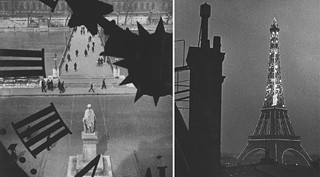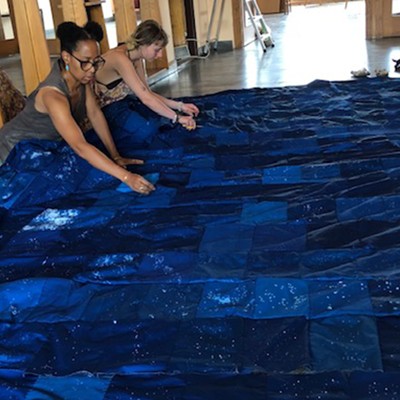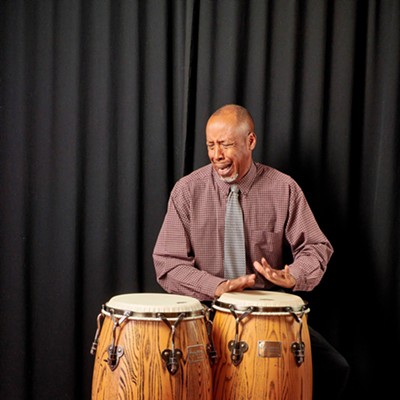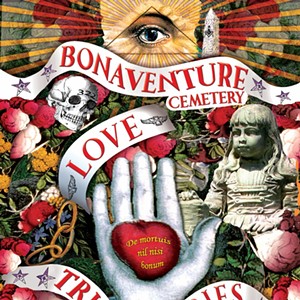Although artists and engineers might seem like strange bedfellows, the link between art and technology is clear. In much the same way that developments in digital media irreversibly changed film, photography and music, at one time it was electricity and the camera which were the cutting edge, changing how artists and audiences alike viewed the world around them.
It’s that sea change event – the electrification and modernization of Paris – and the subsequent new opportunities and experiences found in the formerly darkened streets that’s at the center of the new exhibit Twilight Visions, opening June 11 at the Telfair’s Jepson Center.
The exhibit features an eclectic selection of photos, films, magazines and postcards from the period between the two World Wars – an era in Paris seen as the high water mark of the Surrealist movement.
The diversity of the objects in the exhibit allows viewers “to think about works in a different way,” says Associate Curator Courtney McNeil. Several of the prints hanging on the wall are also featured in magazines that appear in the show, offering historical context and serving as a reminder that they weren’t created specifically as fine art.
Twilight Visions is the largest exhibit the Jepson has hosted since the debut of Dutch Utopia last fall, and the museum’s staff has gone to great lengths to create a unique atmosphere for the work.
Abandoning the usual stark white walls of a gallery space, the rooms have been painted shades of purple and gray, which in combination with the lighting, gives the space an intimate, dusky ambience. Additionally, extra walls have been added to the gallery, giving the impression of several smaller, inter–connected spaces.
“We wanted to create a labyrinth within the gallery,” explains McNeil, “just like the streets of Paris.”
For those who immediately connote Surrealism with the fantastical paintings of well–known artists like Salvador Dali, the show will be an eye–opening experience.
Although some of the work shares a clear aesthetic relationship with more commonly known artists like Dali, many of the photos deal explicitly with subject of Paris, particularly trying to capture the transition toward modernization.
“It’s about the way artists react to modernization – both on a personal level and for the city of Paris as a whole,” says McNeil. “They have a very ambivalent attitude.”
In BrassaÏ’s photo “Paris from Notre Dame,” the camera captures the city lit up at night from the top of the cathedral. In the foreground, two of the cathedrals’ famous gargoyles perch high above the city streets, transformed from protectors against evil spirits to helpless onlookers.
In “Clock of the Académie FranÇcaise, Paris” photographer AndréKertész captures an image of a street scene below from behind the face of the building’s clock, whose numerals and mechanisms obscure part of the view.
The crowd of pedestrians below is seemingly unaware of the passage of time is changing the world around them.
The exhibit is far more than just an exploration of architectural imagery though. One also finds light–hearted fare like the series of collages comparing famous monuments with parts of the female anatomy or pasted together heaps of flying railcars and zeppelins floating around the Eiffel Tower, representing the artist’s conception of Paris in the future.
To help viewers process the broad range of work, the exhibit is broken down into five distinct themes, each occupying its own distinct space. One section is dedicated to the changing depictions of the Eiffel Tower; another, called “Marvelous Encounters” explores how seemingly mundane objects like puddles of water could be transformed into something magical in the hands of an artist.
Beyond the city itself, the individual is also examined. In the section titled “Mutable Mirrors,” a series of photos and collages display distorted images of the human body, and grotesque creations made of mannequin parts.
These bizarre works fit cleanly under the descriptor Surrealist, and seem to ask whether modernization is changing people even more so than it has their city.
The ambitious exhibit is unique in its scope, as well as the efforts of the museum to showcase the work in a way that amplifies the subject matter rather than simply displaying it. Twilight Visions is truly an experience.
“Twilight Visions” Opening Reception and Gallery Talk
When: June 11, 6–7pm.
Where: The Telfair Museum's Jepson Center, 207 W. York St.
More info: www.telfair.org
Cost: Museum admission





























